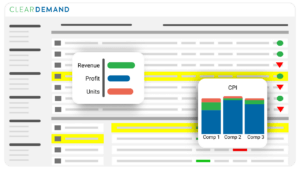
From Manual Pricing to $6M+ in Profit: How One Convenience Retailer Transformed Their Margins
If you’re still managing prices manually or relying on broad price groups, you’re likely leaving dollars on the table and missing opportunities to
Read
Tariffs Hit the Shelves: How Retailers Can Stay Ahead
The retail industry is feeling the pressure as tariffs on Mexico, Canada, and China drive up costs across multiple categories. Groceries, auto parts,
Read
Grocery Pricing’s Moneyball Moment
The pop of a catcher’s mitt, the crack of a bat, and of course, a hot dog. Yes, baseball – my favorite time
Read
How Retailers Can Optimize Promotions for Growth
Retail promotions have long been a core strategy for increasing sales, driving traffic, and staying competitive. But not all promotions deliver results. In
Read
What’s Pushing Retailers to Rethink Pricing?
At this year’s NGA Show, independent and regional grocers gathered to explore innovations that will shape the future of retail. From AI-powered pricing
Read
NRF Show Highlights: Insights for Grocery Retailers
This year’s NRF Show was a whirlwind of innovation and connection. Some of our biggest highlights: linking up and exhibiting with our team,
Read
Should You Reevaluate Your Pricing Strategies?
Should You Reevaluate Your Pricing Strategies? An in-depth evaluation with James A. Sills, President of Clear Demand and Josh Schwartz, Director of Pricing at
Read
Tobacco Pricing
How to Increase Your Category Performance: Tobacco Pricing Pricing tobacco doesn’t have to be cumbersome. You can cut your time pricing cigarettes and
Read
Bungee Tech Merges with ClearDemand
A note from Rajat Nigam, CEO and co-founder of Bungee Tech Today marks a transformative moment for our company. I am thrilled to
ReadThe Latest Insights – Straight to Your Inbox
Sign up for the ClearDemand mailing list for actionable strategies, upcoming events, industry trends, and company news.
